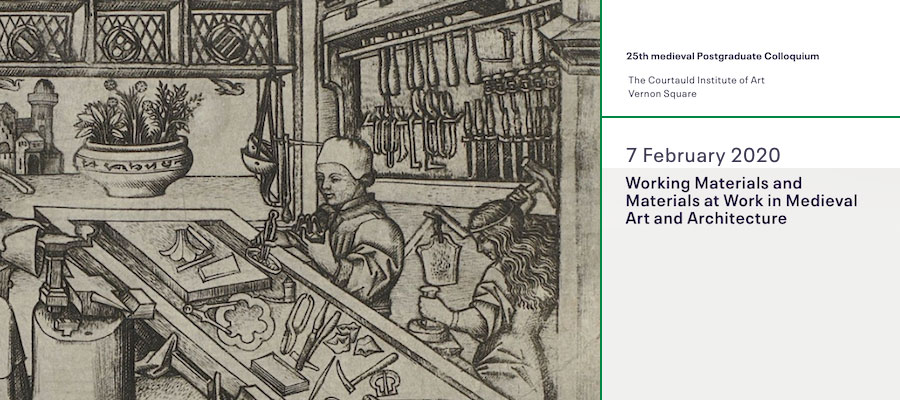Working Materials and Materials at Work in Medieval Art and Architecture, The Courtauld Institute of Art, Vernon Square, February 7, 2020
Materials mattered in the Middle Ages. Only with the right materials could artists produce works of art of the highest quality, from jewel-encrusted crosses, gilded and enamelled chalices and ivory plaques to large-scale tapestries, wooden stave churches and stone cathedrals. This conference seeks to explore the qualities and properties of materials for the people who sourced, crafted and used them.
A critical examination of the physical aspect of materials, including stone, wood, metal, jewels, and textiles, can lead art historians to a deeper understanding of objects and their context. Medieval materials did not function as frictionless vehicles for immaterial meaning: materials, their sourcing, trade and manufacture all contributed to the reception and value of the object. In the vein of scholars like Michael Baxandall (The Limewood Sculptors of Renaissance Germany, 1980) and more recently Paul Binski (Gothic Sculpture, 2019), this conference asks participants to ground their papers in the messy realities of crafting materials, and to situate the object and its materials within a network of social, political and economic factors.
The Courtauld Institute of Art’s 25th Annual Medieval Postgraduate Colloquium invites speakers to build out from the object and consider the ways in which physical materials were used, manipulated and interpreted by craftspeople, patrons and audiences throughout the medieval world (understood in its broadest geographical and chronological terms).
Advance registration requested.
